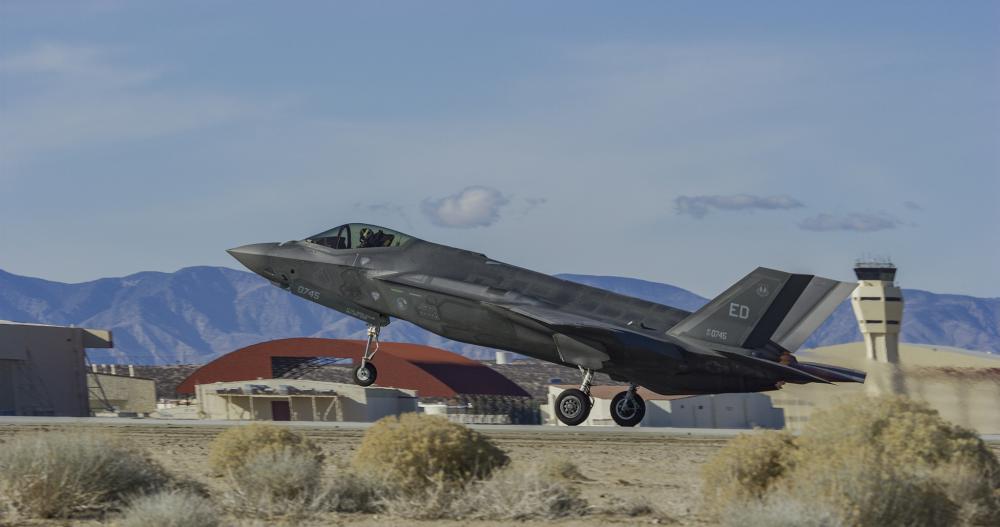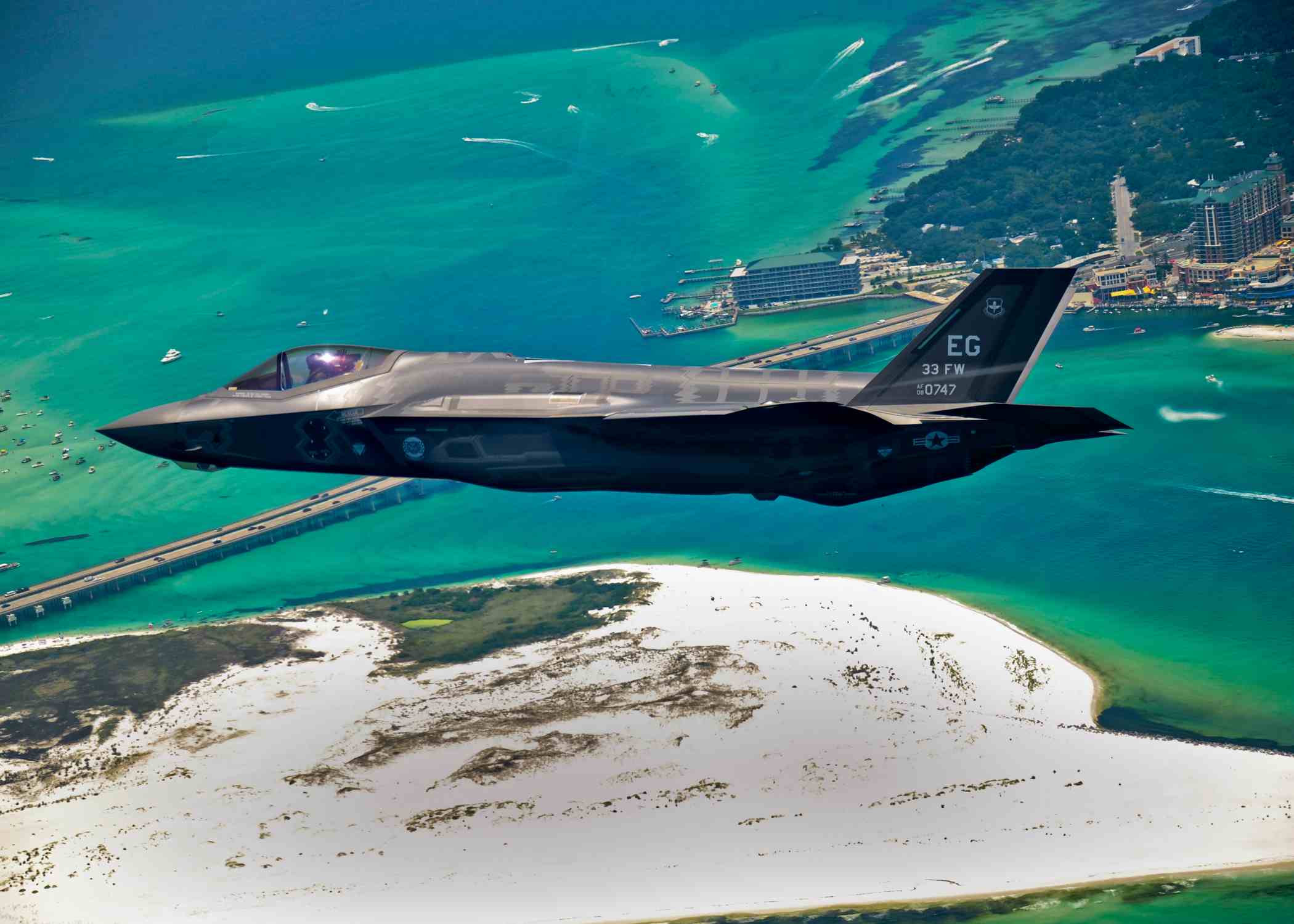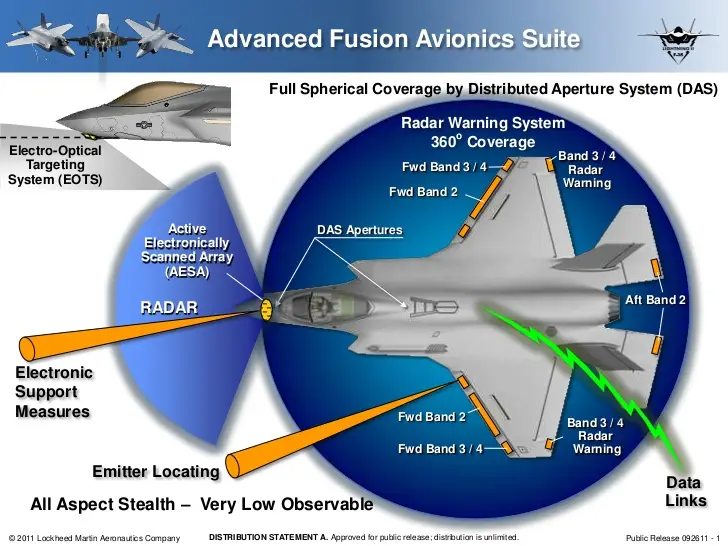F-35 Lightning II stealth fighter, manufactured by US defense giant Lockheed Martin, is poised to receive a highly-classified Block 4 upgrade, making it a much more powerful aircraft.
While the Block 4 upgrade will provide the F-35 with many new capabilities, Air Combat Command boss General Mark Kelly has made it pretty clear that the aircraft’s electronic warfare technology will be the most important.
The Air Force general emphasized the significance of the new electronic warfare (EW) capabilities at a media roundtable at this year’s Air & Space Forces Association Warfare Symposium in Aurora, Colorado.
The new upgrades will considerably enhance the F-35s’ electronic warfare abilities, enabling the service to ensure that the stealth aircraft will continue to be valuable in crucial wars.
Block 4 is the comprehensive modernization project for all three F-35 A/B/C variants that will be executed in the upcoming years. F-35 manufacturer Lockheed Martin heads the project.

These upgrades include 17 new weapon systems, new radar, enhanced electronic warfare capabilities, powerful propulsion upgrades, and more.
The F-35’s capability to carry out most of what the USAF expects relies mainly on its Block 4 electronic warfare capabilities, said Kelly.
The EurAsian Times reported that Block 4 upgrade integration would rely on a different project called Technology Refresh-3 (TR-3). This aims to update the F-35’s central processor, memory unit, panoramic cockpit display system, and related avionics.
Since TR-3 is anticipated to offer 25 times more computational power than the F-35’s current TR-2 computing system, it is being referred to as the new “computer backbone” of the aircraft.
How EW Capabilities Enhance Fighter Jets
One of the numerous new electronic warfare (EW) abilities the F-35 will receive under Block 4 is a brand-new multifunction active electronically scanned array (AESA) radar.
The F-35 is outfitted with Northrop Grumman-sourced AN/APG-81 Active Electronically Scanned Array Radar. However, it will be replaced by an even more powerful radar array, dubbed the AN/APG-85.
Northrop Grumman, for its part, has only stated that this new radar system will include some of the most cutting-edge technologies on the market and support air superiority.
This has prompted many to theorize that this new radar will use TRMs (Transmit/Receive Modules) based on GaN (Gallium Nitride).

Even in the face of electronic countermeasures, these new TRMs significantly improve power transfer and clarity. They also provide superior thermal management, allowing you to send more power through them for target identification and electronic warfare tasks.
According to Steve Trimble of Aviation Week, this new design may double the F-35’s target detection range while maintaining the same power output and array size. This would give the F-35 a significant advantage over rival fighters in beyond-visual-range encounters.
The jet’s Distributed Aperture System (DAS) and Electro-Optical Targeting System (EOTS) have seen substantial advancements, but the entire list of Block 4 modifications is still classified.
Even though more major upgrades to the aircraft’s EW suite are anticipated and highlighted, little information has been provided about them.
Nonetheless, without TR-3 and the processing power it is anticipated to provide, Air Force officials agree that Block 4 will be unable to meet the service’s needs for the F-35 program.
The Block 4 upgrade will improve the F-35’s electronic warfare capabilities, enhancing its existing electronic warfare suite. These upgrades will be integrated into the jet’s Automated Logistics Information System (ALIS) backend cyber support infrastructure.
According to Lockheed Martin, the F-35’s information infrastructure is provided by ALIS, which combines a wide range of capabilities, including operations, maintenance, prognostics, supply chain, customer support services, training, and technical data.

The stealth jet’s crucial capability is gathering electronic signals from hostile radars that emit them. Once this intelligence is packed into the ALIS, the F-35 could provide American forces and possibly allied nations with timely, relevant insights on the adversarial electronic order of battle.
“If you’re gonna go where we need to go, that software, hardware, and EW; all three have to be able to operate in a very, very robust EW environment that our peers will put up that runs the gamut across the electromagnetic spectrum,” Kelly said.
He added, “Single hertz through to kilohertz up to the high, high end. It’s the only way we can operate. It’s processing speed. We’ve got to have the most current software load, the most current hardware load, current apps, EW, all of that, or we’re not going to get as far as we need.”
The transmission and dissemination of the mission data the Block 4 F-35 sucks up will be critical in assuring its survivability in a highly contested environment.
Kelly remarked that as a skilled fourth-generation pilot who has had the opportunity to fly the F-35, he could already see how Block 4 and TR-3 will assist the upcoming generation of pilots in managing the massive amount of electronic intelligence that the upgraded F-35s would gather.
Block 4’s main objective is to provide F-35s and their pilots with the equipment and capabilities necessary to wage and win an electromagnetic spectrum battle.
- Contact the author at ashishmichel(at)gmail.com
- Follow EurAsian Times on Google News




